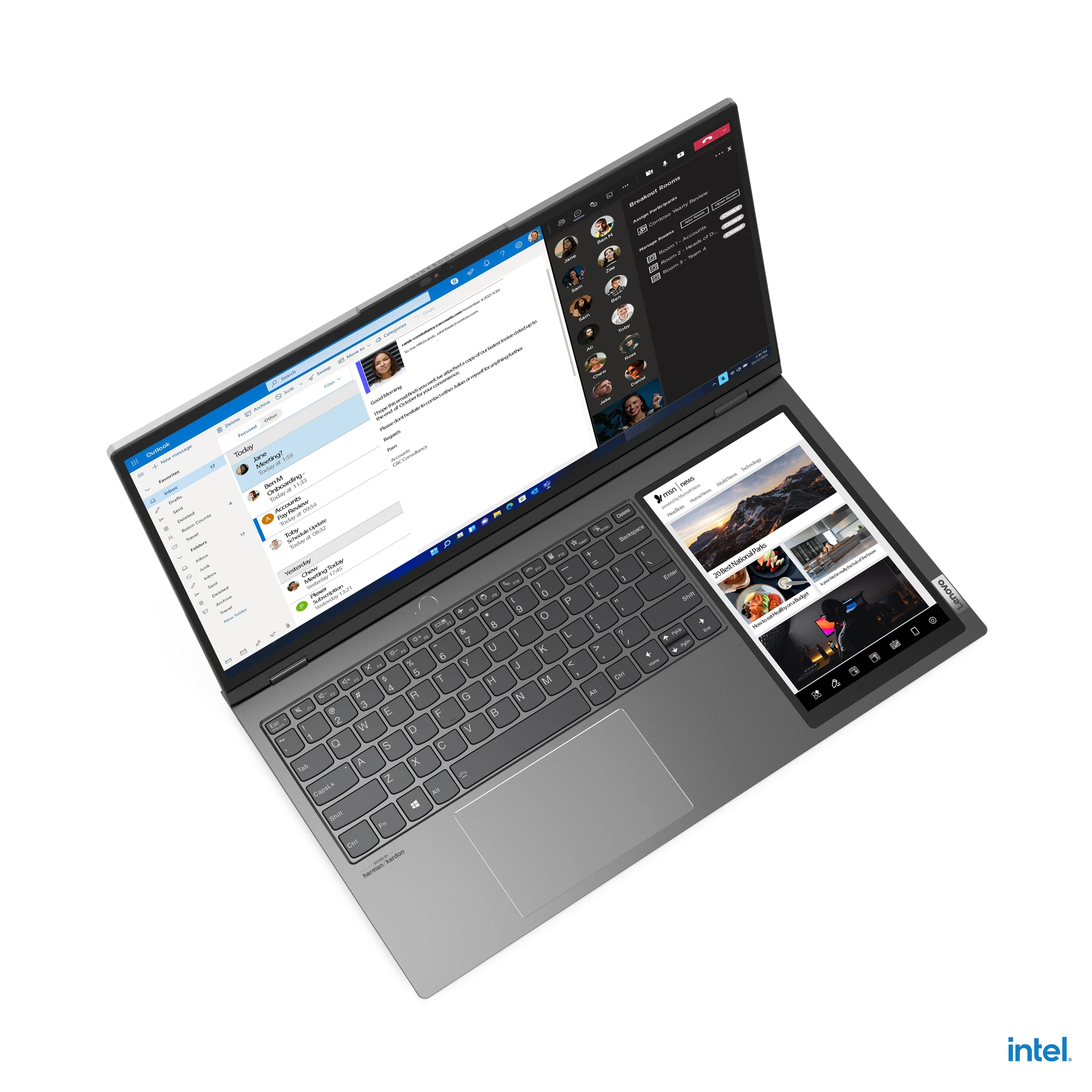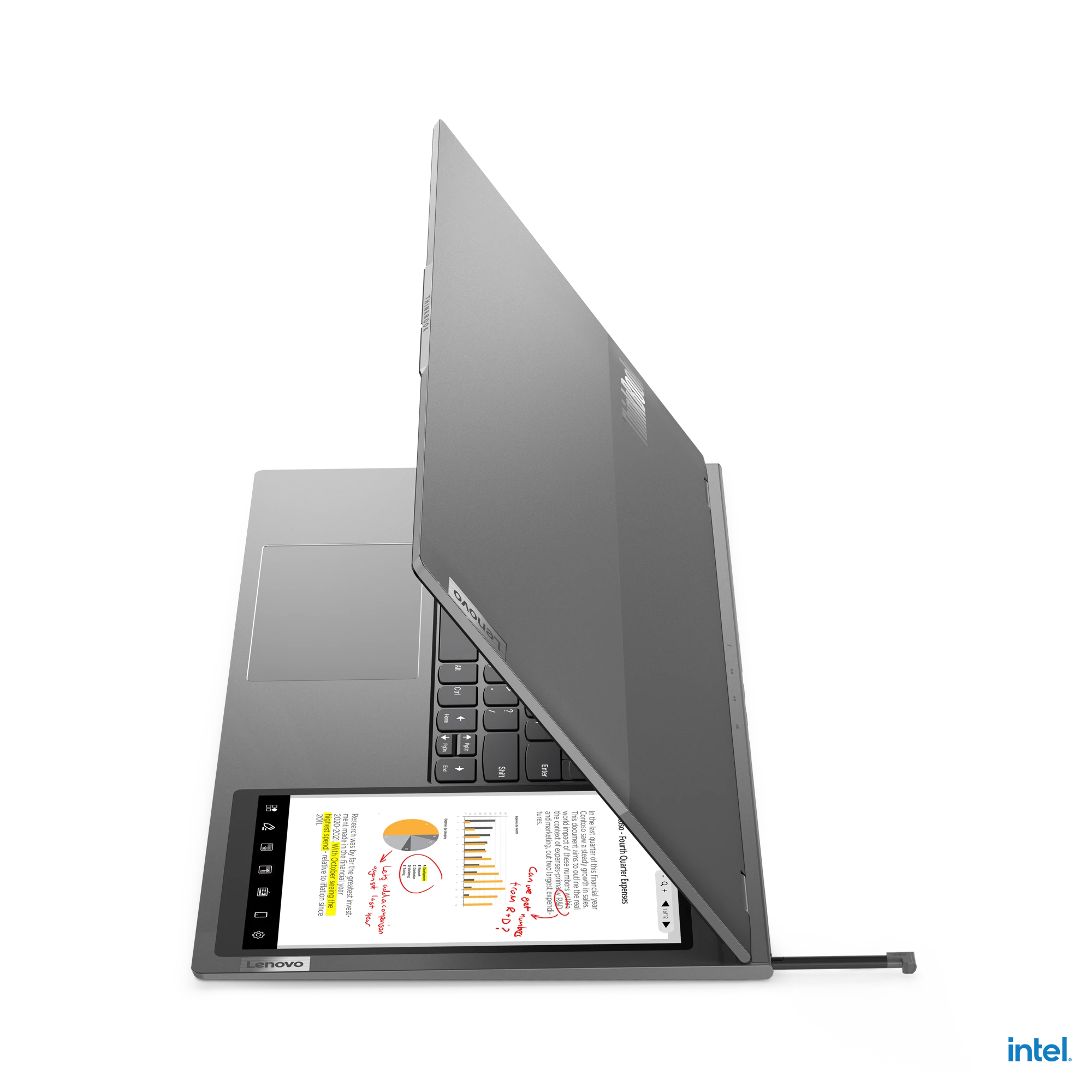For the second-generation ThinkBook Plus laptop, Lenovo added an E Ink outer lid display to complement the main LCD screen. The company has also treated the latest model to an extra display, but this time the 8-inch multitasker is positioned to the right of the keyboard.
First revealed at CES 2022, the ThinkBook Plus Gen 3 business laptop features a much bigger main display compared to Gen 2, at 17.3-inches and 3,072 x 1,440 resolution with 120-Hz refresh rate, 400 nits of brightness and Dolby Vision.
This has allowed for a larger input area, but rather than install a numeric keypad to the right of the keyboard and trackpad, Lenovo has opted to install an 8-inch (800 x 1,280) secondary screen for improved productivity and multitasking ease.
"Customer insights suggested multiple split screens and a pen-enabled second display were appealing concepts, ideal for many practical use cases," said Lenovo's SMB (small to medium-sized business) Product Executive Director, AG Zheng. "Employees that participate in many video conferences with presentations and frequently take notes, engage in instant messaging, or conduct heavy data analysis would benefit from such a form factor.
"For SMBs, it’s important to have a seamless transition from keyboard to touchpad so we strategically placed the second display next to the keyboard for a natural transition. In an era of interconnected hybrid workplaces, our phone screens, tablets, monitors, etc., must play a role in extending functionality to allow seamless multitasking, collaboration and productivity."

This mini-tablet-sized multitouch zone can host frequently used app icons, move chats down from the main display during videoconferencing, extend document editing areas, show sub tools for supported applications, mirror a paired smartphone screen, serve up a handy calculator while using financial apps and spreadsheets, or assist with content creation with the help of an integrated digital pen. It should also offer a more comfortable scribbling experience than reaching up to the main display.
The ThinkBook Plus Gen 3 runs Windows 11 Pro and can be had with a 12th Generation Intel Core i7-12700H processor that includes integrated Iris X graphics and support from up to 32 GB of LPDDR5 RAM and 1 TB of SSD storage.
The laptop comes with Thunderbolt 4 and USB-C and Type A ports, plus HDMI and a 3.5-mm headphone/mic combo jack, as well as cooked-in Bluetooth 5.2 and Wi-Fi 6E. There's a Full HD IR camera with privacy shutter in the main display's top bezel, and dual Dolby Atmos speakers with Harman Kardon sound should make for a decent mobile listening experience.
Lenovo boasts up to 11 hours of per-charge usage from the 70-Wh battery based on the MobileMark 2018 benchmark – though actual battery life in day-to-day operation will likely be much less – and rapid charging is supported as well.
The ThinkBook Plus Gen 3 business laptop is available now for a starting price of US$1,500, a hundred bucks more than the estimated price given back in January.
Product page: ThinkBook Plus Gen 3







